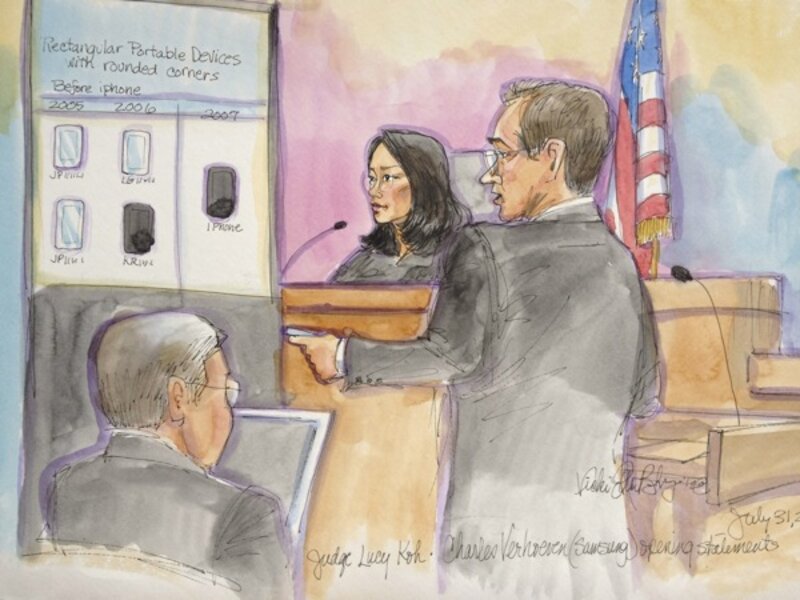Court suppressed Apple evidence, Samsung releases it to media anyway
Loading...
In another round of the ongoing Samsung v. Apple case, Samsung released excluded trial evidence to the press Tuesday – a decision that the “audibly irritated” presiding US District Judge Lucy Koh asked the company to address.
But Samsung lawyer John Quinn said Wednesday morning that Samsung was within its rights to release the evidence, comprised of an e-mail, off-the-record testimony, and mock-ups of Samsung phones, including the F700, which Apple alleges is the iPhone copycat.
“I’m worried about the extrudo [sic] shape we’re using for P2 etc. looking at what [Apple designer Shin Nishibori is] doing with the sony-style chappy, he’s able to achieve a much smaller-looking product with a much nicer shape to have next to your ear and in your pocket,” one email between two Apple employees reads.
Mr. Nishibori is an industrial designer at Apple, who refused to testify in court but said he was asked to make a phone prototype based on the question, “if Sony was to make an iPhone, what would it be like?”
Samsung also included a media statement in the e-mails chastising Judge Koh’s decision to exclude the evidence.
“The Judge’s exclusion of evidence on independent creation meant that even though Apple was allowed to inaccurately argue to the jury that the F700 was an iPhone copy, Samsung was not allowed to tell the jury the full story and show the pre-iPhone design for that and other phones that were in development at Samsung in 2006, before the iPhone,” the statement says. “The excluded evidence would have established beyond doubt that Samsung did not copy the iPhone design. Fundamental fairness requires that the jury decide the case based on all the evidence.”
Although the Judge demanded to know what legal term authorized the press release and e-mails, Mr. Quinn argued Wednesday in a declaration that Samsung did no wrong in releasing evidence relating to the case.
“Far from violating any order, Samsung’s transmission to the public of public information disclosed in pretrial filings is entirely consistent with this Court’s statements that the ‘workings of litigation must be open to public view,’ ” the declaration claims. “Samsung’s brief statement and transmission of public materials in response to press inquiries was not motivated by or designed to influence jurors.”
Mr. Quinn also said he doesn’t think the jurors will see the evidence because they have been “specifically instructed not to read any form of media relating to this case.”
For more on how technology intersects daily life, follow us on Twitter @venturenaut.
RELATED: 10 great Siri tricks that iPhone owners probably don't know







